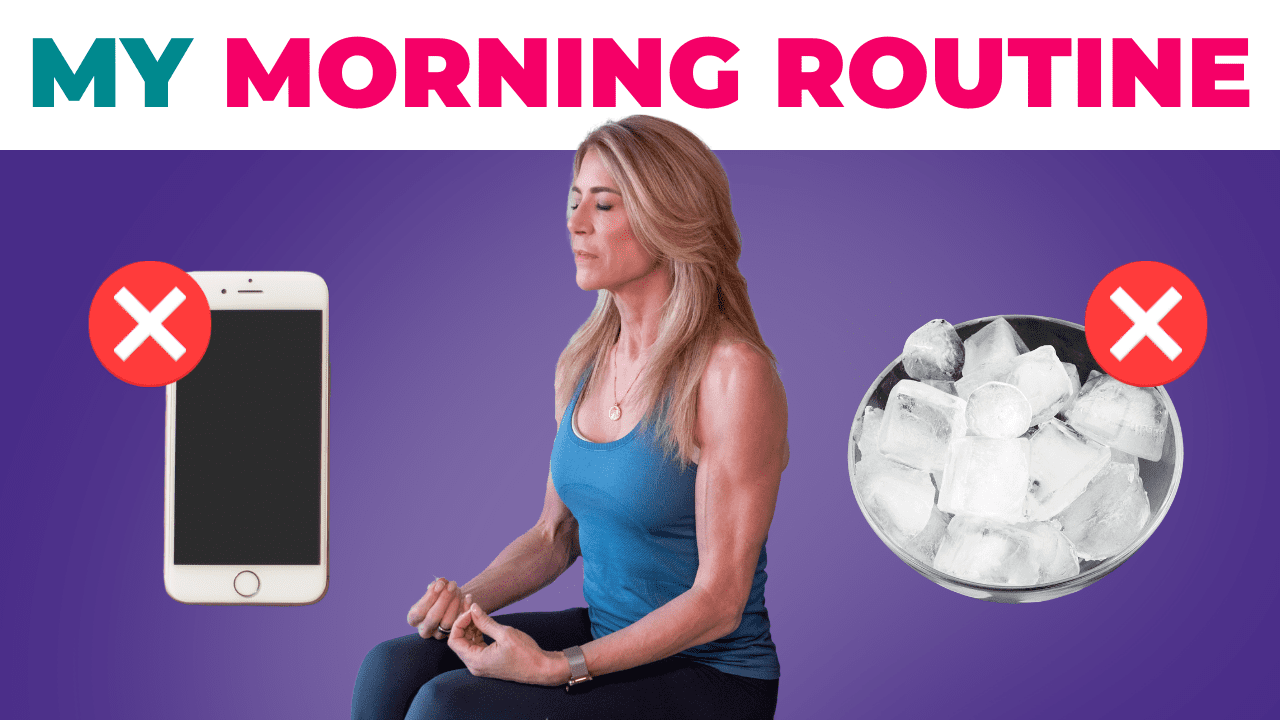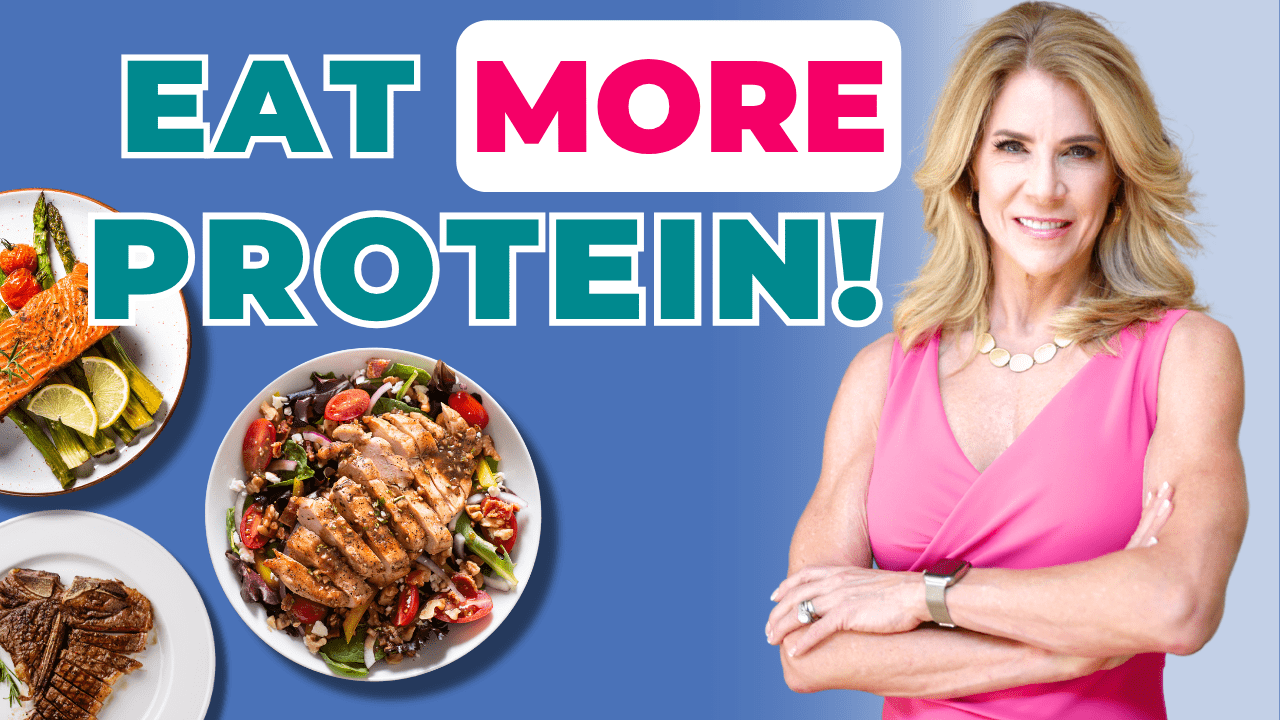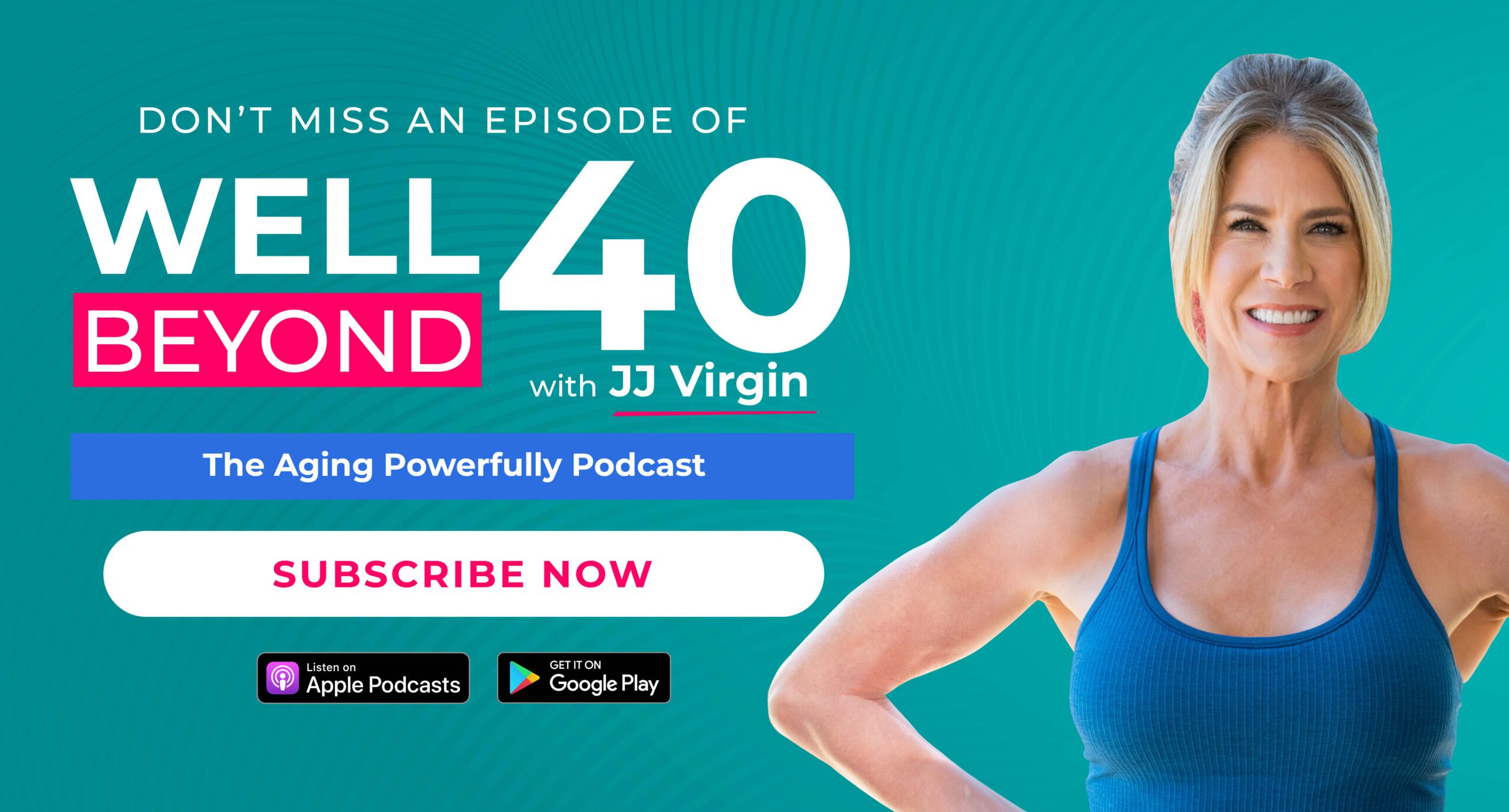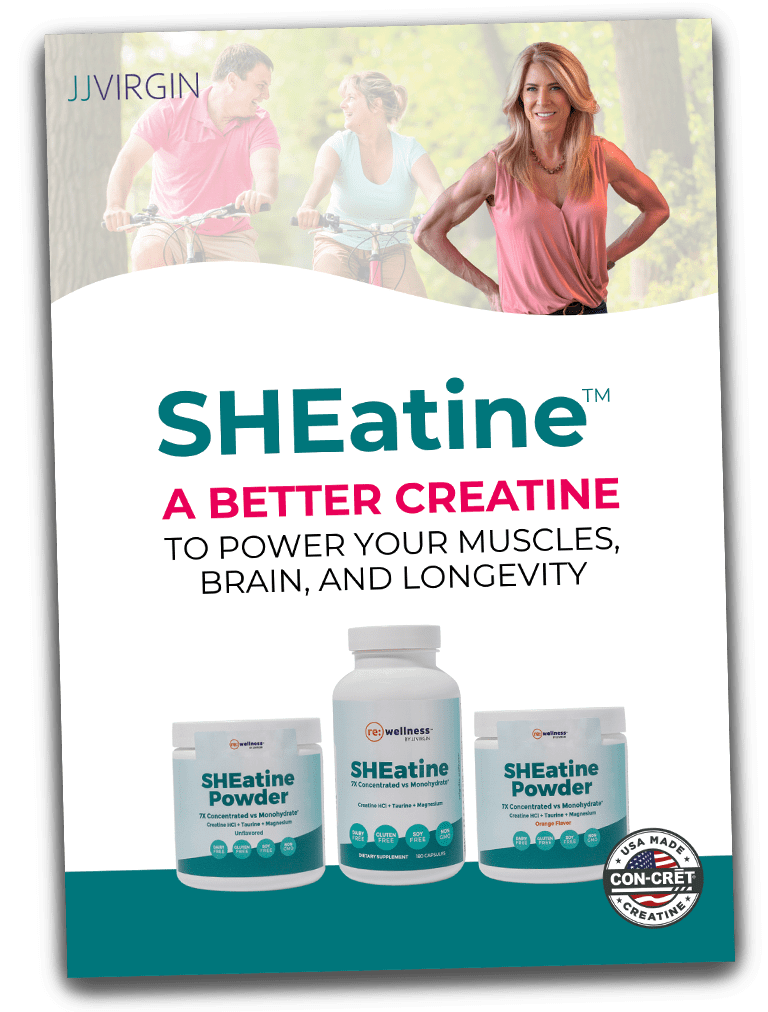How to Eat for Energy, Muscle Preservation, and Hormonal Health
I’m tackling a hot topic today that might surprise you: why intermittent fasting could be backfiring for women over 40. If you’ve been diligently following that 16:8 schedule and skipping breakfast, you might actually be accelerating muscle loss at a time when preserving lean mass is critical. Studies show that women in perimenopause and beyond need MORE protein, not less, and that consuming it earlier in the day is essential for maintaining metabolic health. I explain why eating breakfast sets your metabolic tone for the day, prevents the catabolic breakdown of muscle, and helps regulate blood sugar. Plus, I share my personal experiment with fasted workouts versus eating before training—with surprising results that changed my entire approach to morning nutrition.
At age 40+, we need to focus on preserving muscle tissue to maintain metabolism and quality of life, not just weight management. This episode reveals exactly how much protein you need, delicious high-protein breakfast options, and how to adapt intermittent fasting to work WITH your hormones, not against them.
What you’ll learn:
- Why muscle preservation becomes critical after age 40 and how breakfast plays a key role
- The scientific research on how skipping breakfast affects metabolism and muscle preservation
- How proper protein timing can prevent “anabolic resistance” as we age
- My personal experiment with fasted vs. fed workouts and the game-changing results
- Practical high-protein breakfast options that support muscle maintenance
- How to adapt time-restricted eating to work with your hormonal needs
- The ideal protein intake for women over 40 (hint: it’s higher than you think!)
Love the Podcast? Here’s what to do:
Make My Day & Share Your Thoughts!
- Subscribe to the podcast & leave me a review
- Text a screenshot to 813-565-2627
- Expect a personal reply because your voice is so important to me.
Join 50,000+ followers who make this podcast thrive.
Want to listen to the show completely ad-free?
- Go to subscribetojj.com
- Enjoy the VIP experience for just $4.99/month or $49.99/year (save 17%!)
- Click “TRY FREE” and start your ad-free journey today!
Resources Mentioned in this episode
Reignite Wellness™ Amino Power Powder
Reignite Wellness™ SHEatine Powder
Reignite Wellness™ ElectroReplenish
7-Day Eat Protein First Challenge
Reignite Wellness™ Plant-Based & Paleo-Inspired All-In-One Shakes
Track your protein & macros with Cronometer App
Reignite Wellness™ Collagen Peptides Powder
Get 60 FREE delicious, protein-packed shake recipes in my Eat Protein First Smoothie Guide
Episode Sponsors:
Try Timeline. Use code JJ10 for 10% off all products
Try Qualia risk free for up to 100 days and code VIRGINWELLNESS for an additional 15% off
Air Doctor: get up to $300 off at AirDoctorPro.com with promo code VIRGIN, plus a 30-day money-back guarantee and FREE 3-year warranty (worth $89)
Aqua Tru: Get 20% OFF with promo code VIRGIN at AquaTru.com
Visit Peluva and use the code VIRGIN For 15% off your first pair! Peluvas let your feet be feet!
Think skipping breakfast is helping with weight loss? Well, here’s why that strategy might be backfiring, especially if you’re over 50. If you have been diligently intermittent fasting, shortening your feeding window by skipping breakfast, it might actually be backfiring, especially if you’re over 50. Now, let’s break down why skipping your first meal could be sabotaging your metabolism, your muscles, and even your long term health and totally getting in the way of you aging powerfully.
By the way, if you’re into optimizing your metabolic health, getting your metabolism boosted, and aging powerfully, you are in the right place. So make sure you subscribe so you don’t miss any of the videos. And now let’s dig into this because if we’re going to talk about skipping breakfast, this is usually a strategy that’s deployed in intermittent fasting.
Or time restricted feeding. For this video, I’m going to refer to this as time restricted feeding. And what’s typical here is this 16 8, where you fast for 16 hours and then you eat for 8 hours. And usually this is done by just skipping breakfast, right? And then just going and having your first meal at lunch.
We’re going to unpack that and unpack what some of the better ideas might be for you. But let’s talk first. Here’s the first big question is, how does skipping breakfast Affect muscle loss in women 40 plus and remember starting at around the age 30 We start losing up to 1 percent of muscle mass a year and muscle is really important because this is The biggest way we can impact our resting energy expenditure how many calories we’re gonna burn at rest right and that’s a big part of your metabolism.
This starts to get even worse as we go through menopause hormones go down and muscle starts to go off the cliff along with bone and this muscle loss which if you lose enough of it and you lose the strength of it is known as sarcopenia and again this is going to impact your metabolism. And it’s going to impact your quality of life too.
So can skipping breakfast cause muscle breakdown? Well, it turns out that it can. There was a clinical trial that looked at time restricted feeding and it led to weight loss, but it was also associated with a significant decrease in lean mass, including muscle in older people. Now here’s the reality with.
this. This program, where they looked at this, they also were not optimizing protein intake, they were not optimizing resistance training. So likely, if you were getting an optimal protein and doing resistance training, you could offset some of that. So I just have to say that too, right? There was another study that found that skipping breakfast before resistance training led to higher markers of muscle protein breakdown compared to those who ate breakfast before working out.
I will tell you that I did a little experiment. I’m always in of wanting on myself, like always biohacking, seeing what happens. And I like to do one thing at a time so I can really tell if this is the thing or not. And so for three months, my husband and I did fasted workouts. We didn’t eat until we came back from the gym, which was usually around 10 o’clock.
Wake up around 6 30. You know, we’d have our coffee. No one’s going to stop me from my coffee. I can promise that. And then we’d go to the gym with just electrolytes. And I’ll tell you what, when we went back to eating before we worked out, now we eat around eight, go work out around nine 30 game changer in terms of my ability to lift more.
And the reality is when you go to the gym, it’s all about the volume, the load, how much you can work out. So if you can work out harder, you’re going to be able to build more muscle. which is going to give you better muscle tone, which is going to give you better bone density. So super duper important. And I say this and experts are saying this, Dr.
Gabrielle Lyon and Dr. Stacey Sims both say that eating protein early in the day is critical for maintaining lean muscle mass and preventing catabolism, muscle breakdown. And if you think about it, we are building up and breaking down muscle throughout the day. When you are eating protein, when you’re doing resistance training, you’re triggering muscle protein synthesis.
And then, when you aren’t doing that, times away from that, you start to go into muscle breakdown, and you’re turning over throughout. You’re not just always building up, but you don’t want to be breaking down more than you’re building up. When you go to sleep at night, you’re going to be more catabolic, right?
And then when you wake up in the morning, when you have that protein hit, that helps move you into the Anabolic stage two. So test that out with yourself. If you’ve been one of those people who likes to go and, um, work out without before eating, see how you feel. See the difference. And I will tell you if I’m in a situation where I have to go workout first thing in the morning, like if I’m traveling and I’m gonna miss my workout, if I don’t go first thing in the morning, here is my hack.
I take essential amino acids. So I have a product called amino acid power by reignite wellness. So I take that along with my she a teen powder, which is creating HCL made in the USA plus Torino magnesium and my electro replenish. I put those three things in a big. Drink bottle and I drink the whole thing and I find that I’m fine if I do that.
Still not quite the same as having had breakfast and waited an hour, but it’s my, it’s my next best thing. And sometimes, you know, it’s either that or miss a workout. I’m going to do the next best thing. So what happens to your metabolism when you skip your first meal of the day? Let’s talk about that.
There was one study that I found that showed that skipping breakfast could reduce your daily energy expenditure. How many calories you burn throughout the day by blunting the thermic effect of food. Remember when you eat, you have a thermic effect of that food. Protein’s the highest thermic effect of that food.
And this not eating Slowed the metabolism a bit and it wasn’t sick. It’s not huge 60 calories a day, but you know every bit counts When you’re looking at boosting your metabolism every bit counts There was also one study which is interesting because you see this both ways I’m going to give you another study that shows potential benefits here, but that skipping breakfast could cause some rise in blood sugar that actually led to higher fat storage.
I’m going to show you in a little bit that one of the things I see with intermittent fasting, time restricted feeding is that it can improve insulin resistance and glucose. So I think this is where wearing a CGM, a continuous glucose monitor, and paying attention to your N of 1 can be really great.
Here’s the thing that I noticed personally is that when I skipped breakfast, I just didn’t have the energy and fatigue. I was hungrier later than normal, and my blood sugar regulation just was not as good. And what another study found in 2020 is that people who eat breakfast tend to better muscle preservation, better metabolic efficiency.
I just know and when I’ve looked at all the different studies out there on breakfast or breakfast skipping, that the general consensus is people who eat breakfast, and here’s the difference, a high protein, high quality breakfast, tend to eat less overall and have better blood sugar control. Now, This goes out the window if you eat, like, the coffee shop, uh, muffin and a latte.
It has to be a high quality, high protein intake. If you eat a high carb diet, high carb, high fat diet, even worse, then all bets are off. I’m talking eating protein. What is the ideal protein intake for you in the morning? That’s the question, right? Again, think about this. You’ve just been catabolic, you’ve been asleep overnight, and now you’re going to break your fast.
And this really sets the metabolic tone for the day, what you do here. So it’s very, very important. And it also triggers something called the second meal phenomenon. So if you mess it up at breakfast, you eat a high carb, like pancakes and syrup. Who does that anymore? But if you did, You’re actually now going to start a blood sugar roller coaster that’s going to impact your next meal and make it really hard for you to get off of it.
So we really want to make sure that. First meal is protein rich and really for, for us, 50 plus, I think you’re really looking at 40 grams of protein. 30 is minimal, but due to anabolic resistance, as we age, and this can start as early as 30, it is harder for us to get the amino acids we need from the protein, plus resistance training and trigger muscle protein synthesis.
We’re just, it’s just, we just need more. better resistance training stimulus. We need more protein. And so I say 30 grams of protein, animal protein is minimal, but I think you’re probably better off at 40. And if it’s plant based, 40 to 50. And that’s where you might want to do a little, uh, support with some essential amino acids too, just to make sure you’re getting what, everything you need.
Because one of the challenges with plant essential amino acids is they’re not as bioavailable, they’re not as digestible, and you don’t have the same balance of essential amino acids. And you need them all. So there you go. One other thing is eating protein earlier in the day. It just sets up the whole day perfectly.
You’re gonna have less cravings. You’re gonna have that better thermic effect of food. You’re gonna have better blood sugar regulation and better caloric control. So protein in the morning is the super duper important thing here. What are some breakfast options then that are gonna help you with aging powerfully, with holding on to our body?
Better yet, building muscle because muscle is that metabolic spank. Super important and muscle when it contracts also helps you with fat burning because of what it’s releasing in terms of your body being able to burn fat better. I really like to think of protein first, eat protein first. That’s my mantra.
One gram per pound of target body weight here. 0. 7 grams is your least. And I’d rather have you err on the higher side, especially breakfast. Think of protein, fat, and fiber as my like satiety trifecta. Remember, protein and fiber slow down stomach emptying. They help your body release GLP 1. That helps with satiety.
And then fiber also triggers the release of some chemicals to tell your brain you’re not hungry. So I like this little protein fat and fiber trifecta with protein being the star of the show. So what are some different options? One of them is a smoothie. I have two different protein powders that I use in Reignite Wellness, either a plant based or a bone broth.
based and so I will do those and I do scoops to get up to 30 grams and then I’ll add more into the smoothie like I like to use, um, good karma flax milk that’s got added protein. I’ll use some cheer, some flax seeds in there, uh, usually a little bit. If I’m not doing the seeds, I’ll do a little avocado and then some berries.
So you can easily get yourself up to 40 grams of protein doing that. Another thing that I’ll do with protein powder is I will add it into Greek style yogurt. So if you can tolerate dairy, I personally like to use fat free Greek style yogurt, plain, and then I will add in Some chia or some freshly ground flaxseed or stir in a little nut butter.
And so that’s what I like to do. Sometimes I will go a little crazy and top it with Catalina Crunch, which is a high protein, high fiber cereal. Yup, and a little bit of dark chocolate, I admit it. Um, that’s the way I like to make a parfait. And that again, if you’re not dairy intolerant, as I talk about in the Virgin Diet.
And then also there is, uh, the way I like to do omelets is usually Two eggs and six egg whites because otherwise you’re going to like go overboard on fat. So I like to do two eggs, six egg whites and throw in some spinach and some mushrooms. That’s, that’s my ultimate favorite. Maybe a little bit of feta and some sea salt, like yum.
You can also make an oatmeal, use that Good Karma flax milk, use some of my protein powder in there and add a little bit of chia. And that’s good. Or you can make some overnight oats with protein powder and have a side of an egg or two. And again, since you’re using an app like Cronometer, that’s my favorite one.
If you’re using an app, and I’ll put the link to the app in the show notes, then you’re tracking. Because you’re using a food scale, you’re actually paying attention. You’ll see and you’ll know exactly how much you’re getting. And the cool thing with the food scale is it also tracks to make sure that you’re getting enough of leucine.
And leucine is the essential amino acid that That really is important for triggering muscle protein synthesis. So that’s an easy way to do that. Again, that’s why you can also use essential amino acids as needed. I use my amino acid power from Reignite Wellness to get yourself up to where you need to be.
You can also Have leftovers. You know, I don’t know why it is like I lived in Japan for a while. I helped bring aerobics to Japan back in the 80s and we did not eat breakfast for breakfast. I mean, it was their breakfast, but I remember it distinctly. I was living in the small town Kochi and it was white Kochi Dried fish, I kid you not, and eggs.
But a lot of the breakfast foods that we would have were not breakfast. We would have a salad, you know, it’s that type of stuff. So you don’t have to eat breakfast food for breakfast. In fact, one of my favorite ways to do oatmeal is to do a little bit of oatmeal with bone broth and then add in some of my collagen powder and then put in some mushrooms and some meat.
And that is actually delicious. And I would never have thought about that, but back when Dr. Oz was doing his show, they had me on the air doing savory oatmeal. So I’m like, this is the most amazing thing ever. I never thought of it. But again, the easiest of all, of course, are smoothies. And I will link to my Loaded Smoothie free guidebook that you can get.
And in there, there’s a little 20 off coupon for the store, too. So you can get started with smoothies. So there, you can make it. Easy, easy. Those are some of the things you can do for breakfast. Again, making sure that breakfast is really protein focused. But let’s talk about time restricted feeding. Like when’s it a good idea and when would it be not a good idea?
I talked about how confusing it was before because some research shows that You know, skipping a meal could make your blood sugar go higher, could, could perturb insulin a bit. But the reality is for people who are insulin resistant, who are having some issues, they’re trying to improve insulin sensitivity, doing time restricted feeding, shortening that feeding window can be helpful.
You know, so someone who’s pre diabetic, this might be a helpful thing because it’s been shown to improve insulin sensitivity where I see it being problematic. And again, I think we all need to be doing time restricted feeding, but I want to do it based on the circadian rhythm. I really like the work of Dr.
Satchin Panda. where he talks about eating during the day, not at the night. For me, I wake up in the morning, get up, go to the bathroom, get on my Oxaline Pro Biompedance scale that reports to my phone. So I can track my trends, making sure that I’m improving my body composition and do a little meditation and go see the sunlight.
The dogs go out to pee. So we’re out grounding, have my coffee, go get in the sauna and work, get in the cold plunge and then have breakfast. Right. And so, um, so I’m eating about an hour and a half, somewhere between an hour and two after waking up. My favorite is about two hours after waking up, then about an hour after that, I go to the gym.
And I go to the gym with my Shiitine, Electroplenish, and I still do my amino acid power even though I’ve had breakfast. I take a little bit of that in my drink. And then, no, stop eating 2 to 4 hours before bed. And so if you think about it, if you’re in bed for 9 hours, sleeping for 8, and if you are eating 2 hours after waking up, and you’re stopping eating 2 to 3 That right there is a 10 hour window anyway.
So it’s pretty easy to do a 9 to 10 hour compressed eating window. And I think that makes a lot of sense. The other thing that I think makes a lot of sense is to eat a real meal and then don’t eat. So that you give your body time to eat. Digest the meal and clear out and then you go anywhere from 3 to 5, 6 hours until you eat again.
So I generally go, you know, somewhere in the 4 to 5 hours between meals, but I think that’s an important one too, is in between meals. That’s where you’re hydrating, having that coffee, having that ice cream tea, having that sparkling mineral water, having the regular water, right? That’s when you’re doing that stuff.
And I try to get in at least, um, One to two servings, generally two servings of electrolytes a day as well. So where could this be problematic if you want to cut it down more? You want to do the six to eight hour window? I think this can be challenging for you if you are really focused on holding on to our building muscle.
Remember, we start to lose muscle around age 30 and just getting in the amount of protein you need in you know, when you’re only eating during an eight hour window, that’s probably two meals. Can be hard to get the protein in. So just see if you can get it in. Also, if you’re eating later in the day, right?
And sometimes that might create more stress in the morning. You don’t get as good of a workout in. So that can be a problem too. Um, in fact, that’s one of the things that Dr. Stacy Sims talks about is that. When she sees people pushing that meal, they tend to have more, uh, stress related cortisol spikes and more some hormonal issues.
So I just feel like for us, us women here, especially us women 40 plus, that eating breakfast is a super important meal. We just probably need to push it a little bit more. And the reason I say one to two hours after waking is you want to give your body time to wake up, your pancreas time to get online, your insulin ready to go so that you can.
deal with all of that. So those are my recommendations is I want you to eat by the clock, eat by the daylight, right? Make sure you’re having that protein rich trifecta breakfast. Protein is the main player there, but you’re also getting some fiber from say some berries, or some chia or flax, a little bit of healthy fat, and then listen to your body and see how you do best.
You know how to hack it now if you’re one of those people that has to get up and go work out, but see how you do best. And if you do I have to go do something without eating those essential amino acids can be amazing to help you not be too catabolic, not breaking down as much, right? So by the way, I’m posting all my podcasts now on YouTube so you can get all the info that you need directly on this platform.
So make sure you check out my latest episode again, subscribe. So you get notified every time I drop something new, whether it’s new video or a new podcast.
Hide Transcript
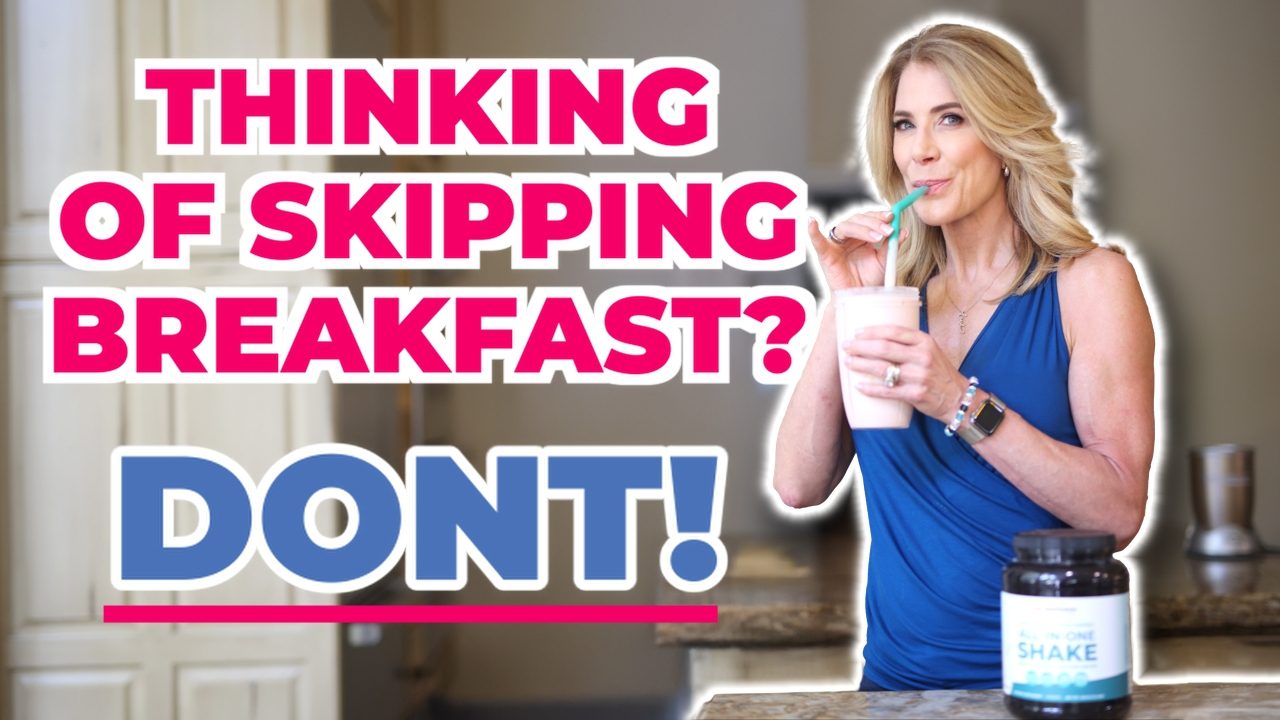
 Subscribe to our show
Subscribe to our show 